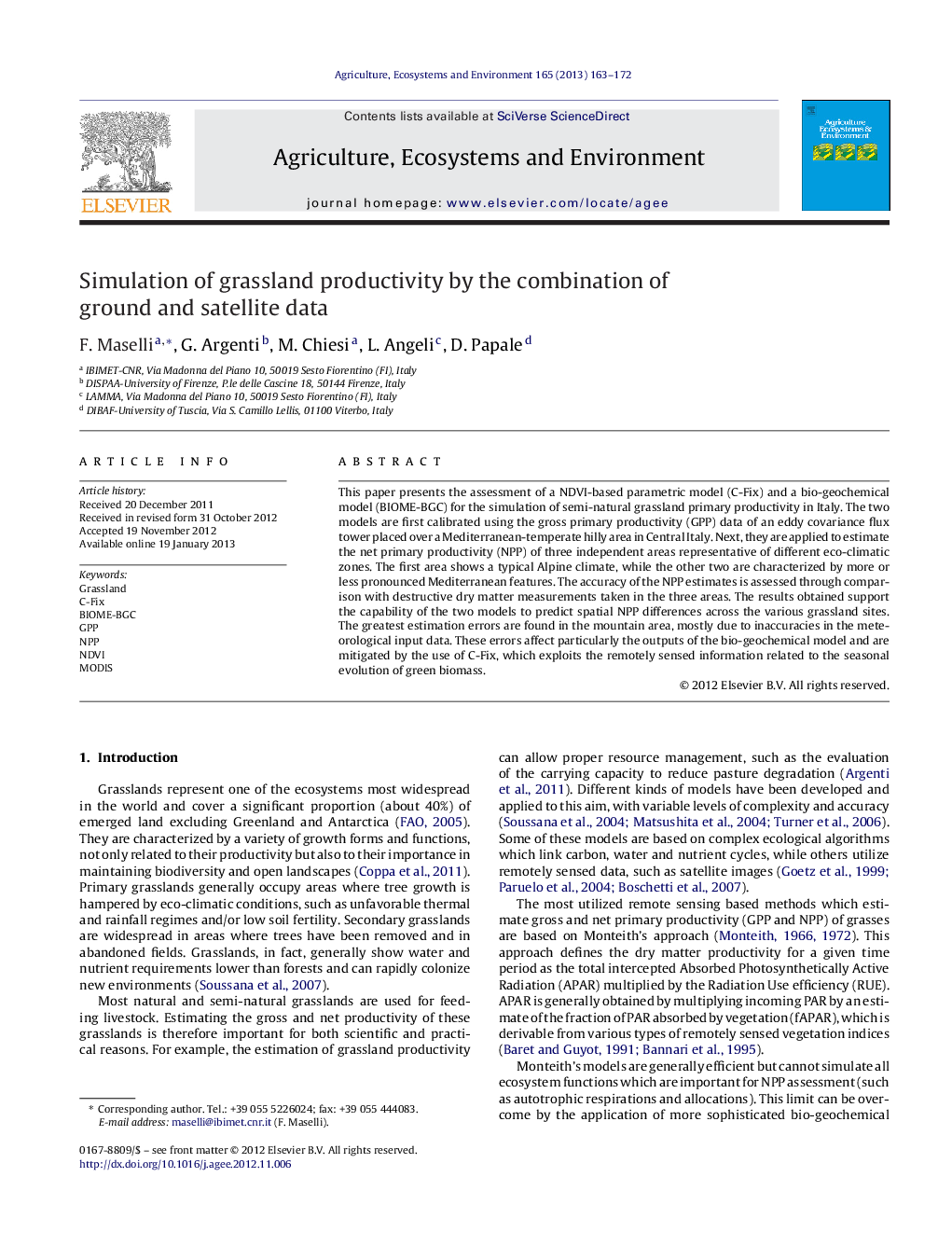| کد مقاله | کد نشریه | سال انتشار | مقاله انگلیسی | نسخه تمام متن |
|---|---|---|---|---|
| 2414371 | 1552087 | 2013 | 10 صفحه PDF | دانلود رایگان |

This paper presents the assessment of a NDVI-based parametric model (C-Fix) and a bio-geochemical model (BIOME-BGC) for the simulation of semi-natural grassland primary productivity in Italy. The two models are first calibrated using the gross primary productivity (GPP) data of an eddy covariance flux tower placed over a Mediterranean-temperate hilly area in Central Italy. Next, they are applied to estimate the net primary productivity (NPP) of three independent areas representative of different eco-climatic zones. The first area shows a typical Alpine climate, while the other two are characterized by more or less pronounced Mediterranean features. The accuracy of the NPP estimates is assessed through comparison with destructive dry matter measurements taken in the three areas. The results obtained support the capability of the two models to predict spatial NPP differences across the various grassland sites. The greatest estimation errors are found in the mountain area, mostly due to inaccuracies in the meteorological input data. These errors affect particularly the outputs of the bio-geochemical model and are mitigated by the use of C-Fix, which exploits the remotely sensed information related to the seasonal evolution of green biomass.
► Two models are assessed to simulate grassland primary production in Italy.
► The first, C-Fix, is an NDVI-driven parametric model; the second, BIOME-BGC, is a bio-geochemical model.
► The two models are tuned using eddy covariance GPP data.
► They are then applied to simulate the dry matter of three independent areas showing different eco-climatic conditions.
► Results indicate the importance of using remote sensing data to reduce the effects of inaccuracies in model drivers.
Journal: Agriculture, Ecosystems & Environment - Volume 165, 15 January 2013, Pages 163–172